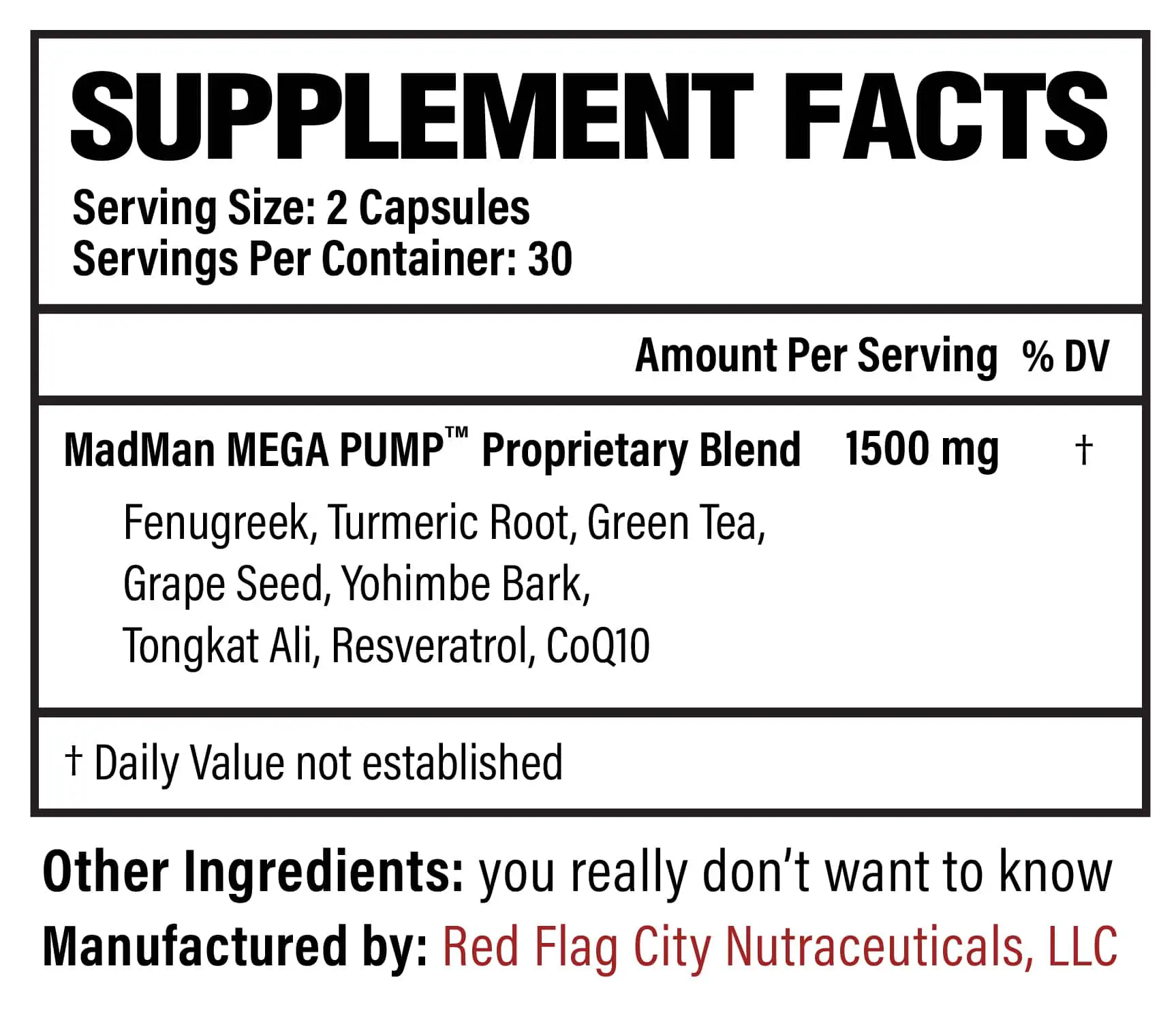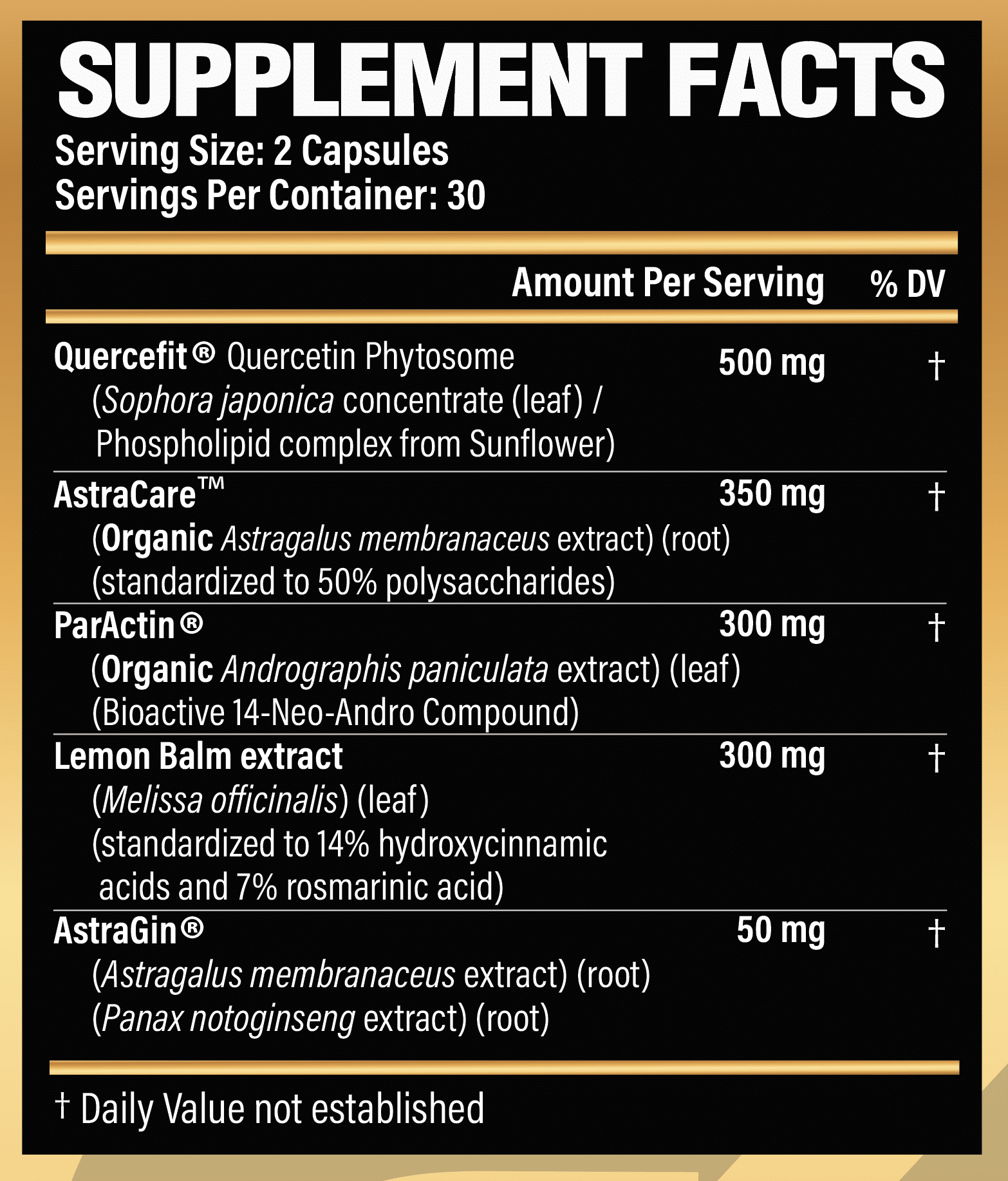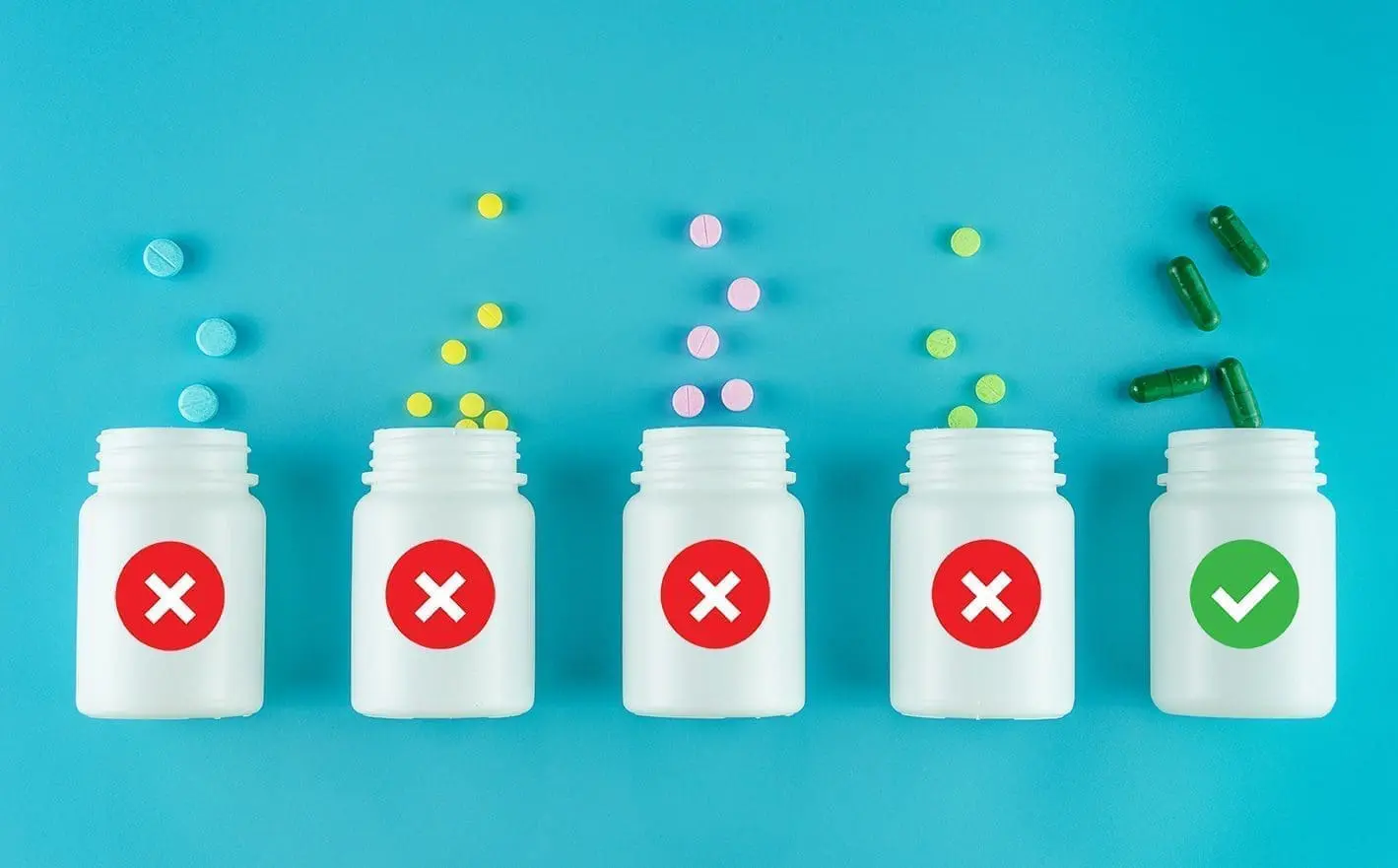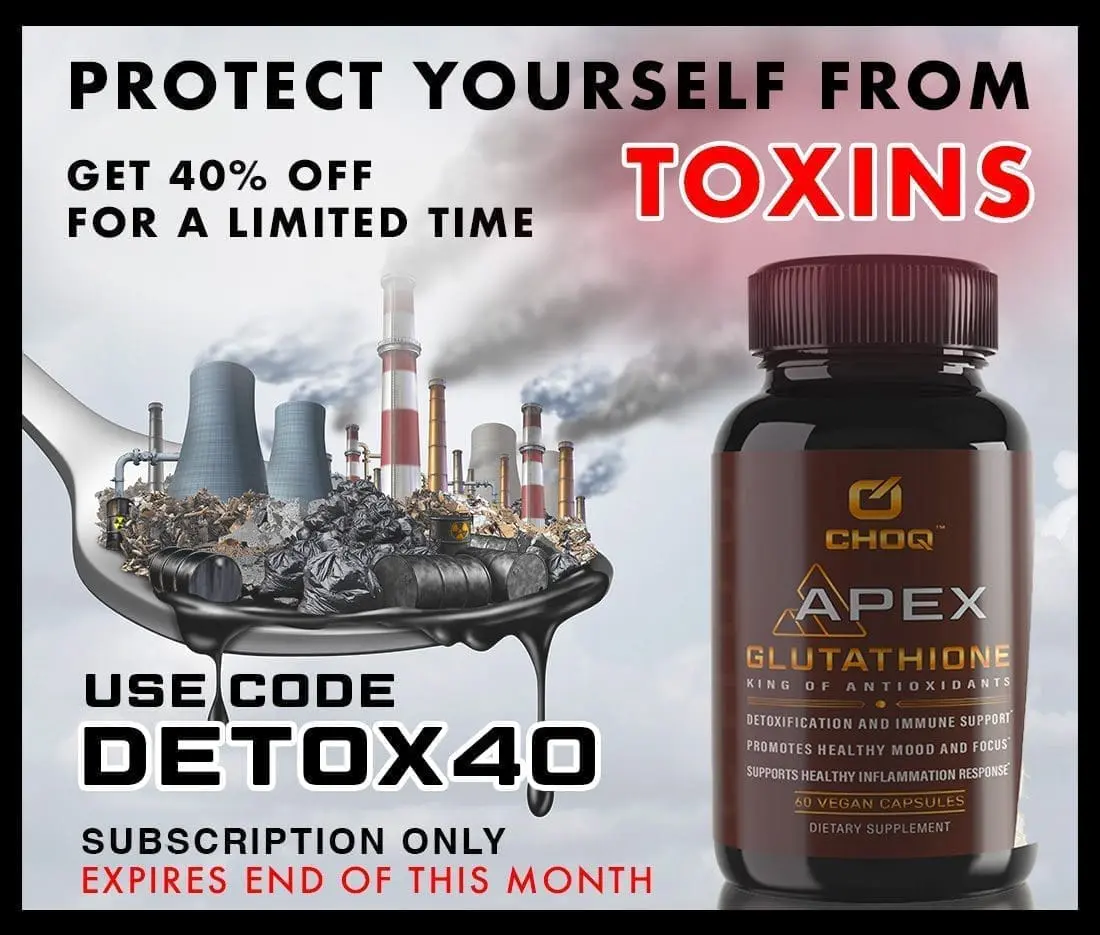I’ve been in the supplements industry for about 12 years now, and I’ve seen just about everything.
During the five years I spent getting my master’s degree in acupuncture and Chinese medicine (it’s twice the length of a normal master’s), I was also working near full-time hours in the supplements department of a major natural grocery chain with fairly high quality standards. So for those five years, I ate, slept, and breathed herbs and supplements, both Eastern and Western.
I read and analyzed thousands and thousands of labels, and it helped me separate the wheat from the chaff, so to speak.
Since then, I’ve been steeped in the industry one way or another. It’s been a wild ride and I’ve learned a massive amount about how things actually work in the world of supplements.
I figured out that there are basically three kinds of supplement companies:
1. The creme-de-la-creme (under 10%): a tiny handful of fantastic brands, lead by passionate, ethical, well-trained people who truly care about making quality products that can dramatically improve peoples’ lives. They employ herbalists, nutritionists, and other people who truly live the lifestyle. They care about sourcing and take pride in being selective about their ingredients. They come up with innovative products that are truly one-of-a-kind.
2. The clones AKA “me-too” companies (30-40%): mediocre brands who aren’t necessarily shady, but tend to focus a bit too much on the bottom line, and aren’t always particularly interested in putting out the highest quality products. These are the companies who, if given a choice between an organic and a conventional ingredient that costs 5% less, will still buy the conventional ingredient to save money. They may or may not have formulators with any training in herbology, nutrition, or physiology. They typically do not innovate and will simply release whatever is trendy.
3. The bottom-feeders (easily 50%): the brands with no passion for health who will literally do whatever it takes to make the most money. These companies take advantage of the extreme complexity of nutrition and herbology, and will use both legal and illegal tactics to trick people into buying their products, which are mostly garbage. They will always use the cheapest ingredients, and often they will drastically under-dose you on anything that’s expensive. These are the companies that give the industry a bad name, and that get all the FDA warning letters for making illegal claims about their products and adulterating them with drugs like steroids and erectile function meds.
It’s extremely easy to start a supplements company these days, which isn’t entirely a bad thing. There are some very knowledgeable, passionate people out there who—with the advent of drop shipping, easy web storefront design, and contract manufacturing—are now able to create quality, leading-edge products and get them to people who will benefit from them.
That’s most definitely the exception, however.
Take the CBD industry. Everyone and their grandmother is starting a CBD company. It’s an ideal breeding ground for bottom-feeders.
Some companies are paying a few hundred dollars per kilogram to get their CBD from the lowest bidder in China, while others are getting the cleanest, organically-grown, European stuff and paying several thousand. But the finished product may be the same price. Never in the history of supplements has a single ingredient exploded into a multi-billion dollar industry practically overnight.
CBD is the new gold rush and there are hordes and hordes of bad actors. It’s certainly a phytochemical that can be wonderfully helpful for certain people, but it’s a real minefield, so watch out.
Whether it’s CBD or anything else, in order to know 100% whether a supplement is truly quality or not, you’d have to go full Erin Brockovich. It’s a heck of a lot of work and requires serious skills.
But of course, nobody has time for that. Instead, I’m going to give you 3 relatively easy ways to identify the quality of your supplement.
#1 – Look for Low Bioavailability Vitamins and Minerals
Bioavailability is a term that gets thrown around a lot without a full understanding of what it actually is. Long story short, it just means how much of something gets into the blood after you take it.
Technically speaking, when we’re evaluating the quality of a vitamin or a mineral, we’re not always talking about bioavailability. Sometimes we’re talking more about bioactivity, which simply means the biological effects of any given ingredient.
An excellent example of this issue is folic acid (vitamin B9), which is the totally human-made, synthetic version of folate. You see, when chemists first figured out how to make a fully stable form of folate, they ended up making a slightly different version of the molecule than any of the ones that occur in nature.
It wasn’t until much later that the real version of folate, also known as L-methylfolate, was created in a stable form and became widely available. This is a truly bioidentical form of folate, meaning that it’s the exact same structure as the kind that occurs in your body. L-methylfolate is plug-and-play, whereas folic acid requires your body to do work before it can use it, and many folks don’t do this very well.
As many of you may know, there’s a huge percentage of the population who do not tolerate folic acid due to the MTHFR gene mutation (though there are many other gene mutations as well, such as MTRR, FOLR1, and FOLR2). For these folks, synthetic folic acid will either be ineffective, or in some cases, could even cause harm.
Methylfolate, however, works just fine for them, and in fact can be a godsend when they finally figure out that they need to switch, as it can improve their health dramatically.
So, given how important it is for such a substantial part of the population to take real folate, it seems fairly egregious that so many companies are still perfectly content to use folic acid simply because it’s dirt cheap.
By ‘dirt cheap’, I mean that you can get Chinese folic acid on Alibaba for about $60 a kilogram, and a kilogram gives you 2.5 million standards doses of 400 micrograms. By comparison, if you want to buy one of the highest quality L-methylfolates, you’re going to pay at least $12,000 per kilogram.
Let’s break that down again:
Cheap folic acid from China: about $60 per kilogram
Patented, clinically-researched L-methylfolate: at least $12,000 per kilogram
That’s 200 times the price!
To make things simple for you, though, here’s a list of red flag ingredients that all have poor bioavailability or bioactivity:
- Folic Acid (synthetic, low bioactivity folate)
- Cyanocobalamin (synthetic, low bioactivity B12)
- D,L Alpha Tocopherol (synthetic, low bioactivity vitamin E)
- Ergocalciferol (low bioactivity version of vitamin D, also known as vitamin D2)
- Magnesium Oxide (poorly absorbed form of magnesium)
- Zinc Oxide (poorly absorbed form of zinc)
- Calcium Carbonate (poorly absorbed form of calcium)
- Sodium Selenite (poorly absorbed form of selenium)
(Note that the natural version of vitamin E looks nearly identical, but lacks the ‘L’. In other words, natural vitamin E is ‘D Alpha Tocopherol’. When I was training in nutrition, I learned a helpful pneumonic: ‘DL’ stands for ‘Darn Lousy’)
If you find any of these vitamins or minerals in your supplement, it means that the people who made it care much more about making money than they do about enhancing your nutrition with an effective product.
#2 – Watch Out for Proprietary Blends and Fairy Dusting
Many people are generally not all that great at math, and can you blame them? It’s not exactly the most interesting topic in school. Lots of shady supplement companies are happy to exploit this fact.
In theory, proprietary blends make sense because they’re there to protect a company’s intellectual property, namely the exact quantity of each ingredient that comprises their unique recipe, their secret sauce.
The problem is that proprietary blends enable supplement companies to do something called ‘fairy dusting’. Also known as ‘label fluffing’, fairy dusting is the practice of using extremely low doses of certain ingredients just so you can put them on the label and make your product look better than it actually is.
With a proprietary blend, you can only know these 2 things:
- That all the ingredients total to the amount of the blend
- That the ingredients’ quantities are listed from greatest to least
Here’s a made-up example of a proprietary blend:

Since all you really know is the total and that the ingredient quantities are lower as you go down the list, there are many different possible permutations.
If this company wanted to, they could make this blend 99% beet powder, meaning that the blend is 1,486 milligrams of beet powder, with 1-3 milligrams of each of the other ingredients.
There’s absolutely nothing wrong with this in the eyes of the law. They’ve given you an accurate total of all the ingredients in the blend.
What you’re getting with this product is a glorified beet powder supplement, but it enables the company to charge far more because the label looks much more impressive, sporting 8 different ingredients, some of which are highly recognizable, such as turmeric and CoQ10.
Notice how the CoQ10 and resveratrol are at the end of the list? The most expensive ingredients tend to end up there for a reason, that reason being money. Evidence-based dosing takes a back seat to profit.
Supplements watchdog group Consumer Lab has made the following statement on proprietary blends:
“The major problem with “proprietary formulas,” as well as with proprietary “blends” and “complexes,” is that they permit manufacturers to withhold important information about what’s really in a product…Proprietary formulas are often developed around an expensive ingredient, like CoQ10, because this allows a company to use less of the expensive ingredient…We have seen this with ingredients such as chondroitin in joint supplements, and SAMe. We also see proprietary formulas marketed for uses such as cognitive enhancement, nerve pain, or weight loss where a company may try to impress the consumer with a laundry list of ingredients having only shreds of evidence relating to the intended use. ”
This isn’t to say that all companies who use proprietary blends are shady, but here’s the point: it’s extremely hard to know whether they are or not because they’re not telling you the amount of each ingredient.
CHOQ is a rare breed because, unlike 95% of the industry, we exclusively use full-disclosure labeling practices, and thus you will never see a proprietary blend on any of our labels.
#3 – Know the Difference Between Powdered Herbs and Herbal Extracts
There’s an extremely simple way to determine whether or not the herbs in a product are going to give you an active dose.
Does it say the word ‘extract’ on it? If not, that’s a red flag.
You see, most modern herbal products nowadays are not simply dried herbs in a capsule. They’re extracts. In order to get the most out of an herb, it’s crucial to extract the active parts out of the plant and discard the rest.
Herbs have different dose ranges, but in general—if we’re talking about raw herbal powders that have not been extracted—a dose might be anywhere from 3 to 15 grams per day (with a small number of outliers on each side).
The largest capsules that supplement companies prefer to use hold 750 milligrams (but up to 1,000 in some cases). So, if you’re buying a product that’s just raw herbal powder in a capsule, you’re going to have to take at least 5-10 capsules a day for it to do much of anything for you.
Extracts can be extremely potent. The Tongkat Ali extract that CHOQ uses, for example, is a 100:1 extract, meaning that each gram of it is the equivalent of 100 grams of plant material. That’s why you can take 100 milligrams and it gives you a daily dose (the equivalent of 10 grams).
Got a supplement with multiple herbs in it handy? Grab your bottle and see whether it says the word ‘extract’ after the name of each herb.
Or, if you’re not near your supplements, let’s have another at that product from our friends at Red Flag City Nutraceuticals:

Now compare that to the supplement facts panel for CHOQ Armor:

See the differences?
In the first example, none of the herbs say ‘extract’ after them. That means that the turmeric you’re getting is probably about 1/20th the potency of your standard extracted curcumin product. Given that you’re getting 1,500 milligrams per day, it’s nearly impossible to get an effective dose of hardly any of these ingredients.
Not to mention the fact that they didn’t list the part of the plant or the full Latin genus/species designation of any of the ingredients.
A properly made product will look much more like the second example. Most of the herbs should be either concentrates or extracts, and they should all list the full name of the plant and which part it came from.
Don’t Buy from Red Flag City
Sure, their Facebook ads look pretty slick, and maybe they’ve got some great-looking testimonials on their site, but don’t do it.
Don’t buy from Red Flag City!
These are stressful, challenging times. We need real herbs, real vitamins, and real minerals that will actually make a difference in our quality of life. If you’re going to use your hard-earned money to buy supplements to enhance your vitality, improve your nutrition, and help you deal with the intensity of modern life, then use these heuristics to make sure you’re not getting ripped off.
Know someone who buys any random supplement off the internet just without doing any research? Send them this article so you can arm them with the tools to know the difference between quality supplements and junk.
They’ll thank you.






